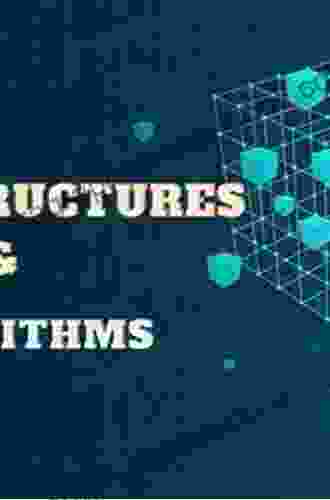Data Structure Preservation: Comprehensive Guide to Safeguarding Data Integrity

Data, the lifeblood of modern organizations, is susceptible to various threats that can compromise its integrity. Data structure preservation emerges as a critical strategy to safeguard the reliability and accessibility of data, ensuring its long-term value. This comprehensive guide provides an in-depth exploration of data structure preservation, covering fundamental concepts, advanced strategies, and best practices to empower organizations in protecting their valuable data assets.
4.5 out of 5
| Language | : | English |
| File size | : | 13662 KB |
| Screen Reader | : | Supported |
| Print length | : | 263 pages |
What is Data Structure Preservation?
Data structure preservation refers to the systematic techniques and processes employed to maintain the integrity and structure of data over time. By preserving the structure of data, organizations can ensure that the data remains accessible, usable, and accurate for various stakeholders, including analysts, decision-makers, and end-users.
Importance of Data Structure Preservation
Preserving data structures is crucial for several reasons:
- Data integrity: Maintains the accuracy and consistency of data, preventing errors or corruption.
- Data accessibility: Ensures that data can be easily accessed and retrieved by authorized users.
- Data usability: Preserves the logical structure of data, making it easier to analyze, interpret, and draw meaningful insights.
- Data security: Protects data from unauthorized access or modification, upholding confidentiality and integrity.
Techniques for Data Structure Preservation
Various techniques can be employed for data structure preservation, each with its own strengths and considerations:
1. Data Normalization
Normalization involves organizing data into tables and columns, adhering to specific rules to eliminate data redundancy and maintain data integrity. This technique ensures that data is stored efficiently and can be easily accessed and updated.
2. Data Validation
Data validation involves implementing rules and constraints to ensure that data entered into a system is accurate, consistent, and adheres to predefined formats. This technique helps prevent invalid or erroneous data from entering the system, maintaining data quality.
3. Data Integrity Constraints
Data integrity constraints are rules defined within a database management system to maintain the consistency and validity of data. These constraints can include primary key constraints, foreign key constraints, and referential integrity constraints, ensuring that data relationships are maintained and data integrity is preserved.
4. Data Versioning
Data versioning creates multiple versions of data over time, allowing users to track changes, compare different versions, and revert to previous versions if necessary. This technique is particularly useful when data is subject to frequent updates or modifications.
5. Data Archival
Data archival involves copying and storing data onto a separate, long-term storage medium, such as tape or cloud storage. This technique ensures that data is preserved for future reference or recovery in case of data loss or corruption.
Best Practices for Data Structure Preservation
Implementing effective data structure preservation requires adherence to best practices, including:
- Establish a data governance framework: Define clear policies and procedures for data management, including data structure preservation.
- Use appropriate data modeling techniques: Choose data models that effectively represent the structure and relationships of data.
- Implement robust data validation mechanisms: Ensure that data entered into the system is accurate and consistent.
- Regularly monitor and review data quality: Establish processes to monitor data quality and identify any anomalies or errors.
- Educate users on data structure preservation: Train users on the importance of data structure preservation and how they can contribute to it.
Data structure preservation is an essential aspect of data management, ensuring the integrity, accessibility, and usability of data over time. By employing appropriate techniques and adhering to best practices, organizations can safeguard their valuable data assets, empowering them to make informed decisions, mitigate risks, and drive innovation. Embracing a data-centric approach that prioritizes data structure preservation is paramount in the digital age, where data has become a cornerstone of business success.
4.5 out of 5
| Language | : | English |
| File size | : | 13662 KB |
| Screen Reader | : | Supported |
| Print length | : | 263 pages |
Do you want to contribute by writing guest posts on this blog?
Please contact us and send us a resume of previous articles that you have written.
 Book
Book Story
Story Genre
Genre Library
Library Paperback
Paperback E-book
E-book Paragraph
Paragraph Bookmark
Bookmark Shelf
Shelf Foreword
Foreword Preface
Preface Synopsis
Synopsis Annotation
Annotation Scroll
Scroll Codex
Codex Tome
Tome Bestseller
Bestseller Classics
Classics Narrative
Narrative Biography
Biography Encyclopedia
Encyclopedia Dictionary
Dictionary Resolution
Resolution Librarian
Librarian Catalog
Catalog Card Catalog
Card Catalog Stacks
Stacks Archives
Archives Periodicals
Periodicals Lending
Lending Reserve
Reserve Academic
Academic Reading Room
Reading Room Rare Books
Rare Books Interlibrary
Interlibrary Literacy
Literacy Study Group
Study Group Thesis
Thesis Awards
Awards Theory
Theory Don Milligan
Don Milligan Bob Heyman
Bob Heyman Guillermo Del Toro
Guillermo Del Toro Walter Block
Walter Block Calvin Crowther
Calvin Crowther Rattawut Lapcharoensap
Rattawut Lapcharoensap Stephanie Pearl Mcphee
Stephanie Pearl Mcphee Max Dorfer
Max Dorfer Paul Hellyer
Paul Hellyer Don Nardo
Don Nardo David Brunori
David Brunori Arjun Appadurai
Arjun Appadurai Dylan Rodriguez
Dylan Rodriguez Randy Aldcroft
Randy Aldcroft Phillip Keveren
Phillip Keveren Bethany C Morrow
Bethany C Morrow Matthew B Robinson
Matthew B Robinson James Mcgregor
James Mcgregor Romulus Hillsborough
Romulus Hillsborough James Rourke
James Rourke
Light bulbAdvertise smarter! Our strategic ad space ensures maximum exposure. Reserve your spot today!

 Cruz SimmonsCezanne's 130 Portrait Paintings: A Post-Impressionist Master's Intimate Gaze
Cruz SimmonsCezanne's 130 Portrait Paintings: A Post-Impressionist Master's Intimate Gaze
 Donald WardKillifish Aquarium 101: A Comprehensive Guide to Setting Up and Maintaining a...
Donald WardKillifish Aquarium 101: A Comprehensive Guide to Setting Up and Maintaining a...
 Ernest HemingwayChoral Music in the Twentieth Century: A Journey of Innovation and Diversity
Ernest HemingwayChoral Music in the Twentieth Century: A Journey of Innovation and Diversity
 Mark MitchellMapuche Peoples and State Formation in Argentina: A Comprehensive Exploration
Mark MitchellMapuche Peoples and State Formation in Argentina: A Comprehensive Exploration Manuel ButlerFollow ·9.1k
Manuel ButlerFollow ·9.1k Edmund HayesFollow ·7.8k
Edmund HayesFollow ·7.8k Jean BlairFollow ·9.4k
Jean BlairFollow ·9.4k Easton PowellFollow ·3.6k
Easton PowellFollow ·3.6k Rex HayesFollow ·18.1k
Rex HayesFollow ·18.1k Hugh ReedFollow ·8.6k
Hugh ReedFollow ·8.6k Brian WestFollow ·13k
Brian WestFollow ·13k Gil TurnerFollow ·6.4k
Gil TurnerFollow ·6.4k

 Ricky Bell
Ricky BellThe Marriage: An Absolutely Jaw-Dropping Psychological...
In the realm of...

 Ray Blair
Ray BlairDiscover the Enchanting Charm of Budapest and Its...
Nestled in the heart of...

 Tyrone Powell
Tyrone PowellHuddle: How Women Unlock Their Collective Power
Huddle is a global movement that empowers...

 Grayson Bell
Grayson BellThe Coin Story of the Holocaust: A Symbol of Hope and...
In the depths of the...

 Virginia Woolf
Virginia WoolfFolklore Performance and Identity in Cuzco, Peru: A...
Nestled amidst...

 Dylan Mitchell
Dylan MitchellThe Enduring Love Story of Héloïse and Abélard: A Tale of...
An Intellectual Passion In the heart of...
4.5 out of 5
| Language | : | English |
| File size | : | 13662 KB |
| Screen Reader | : | Supported |
| Print length | : | 263 pages |




